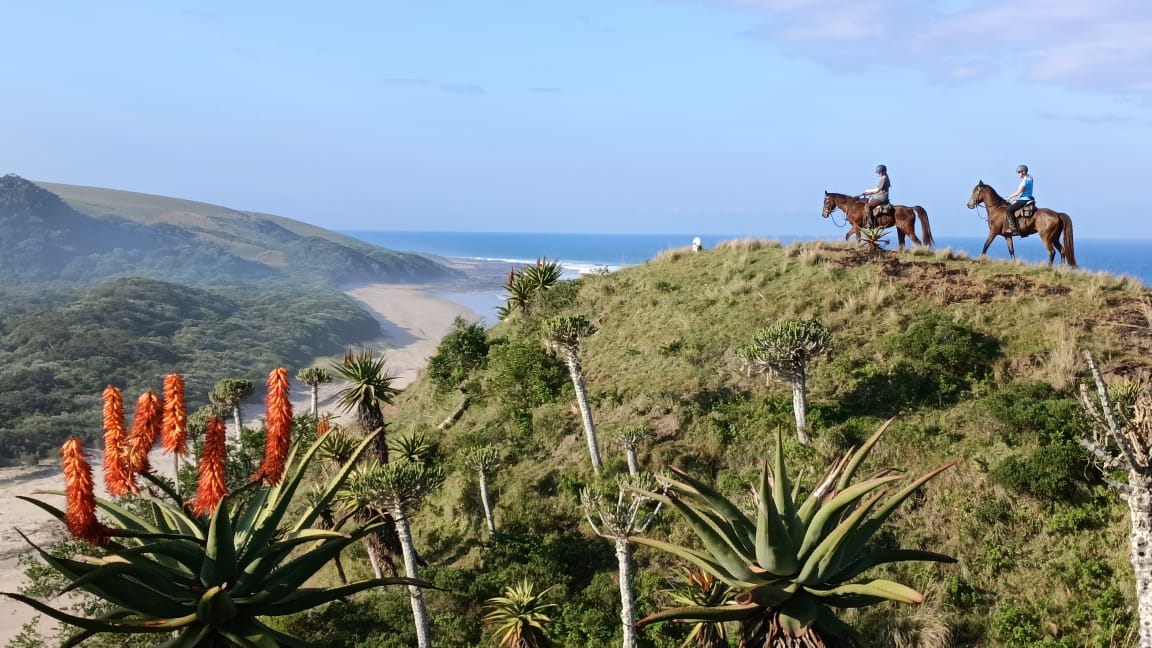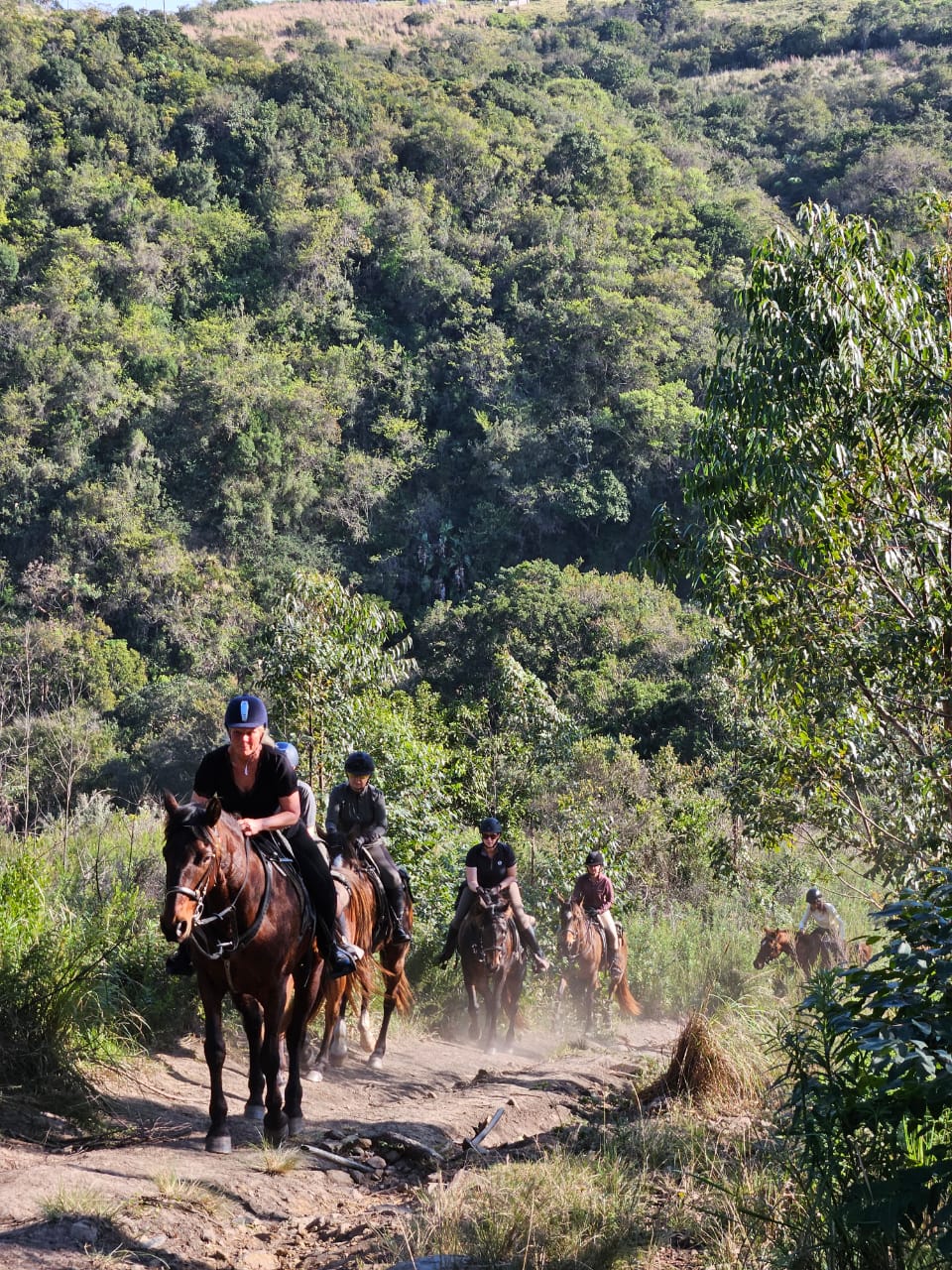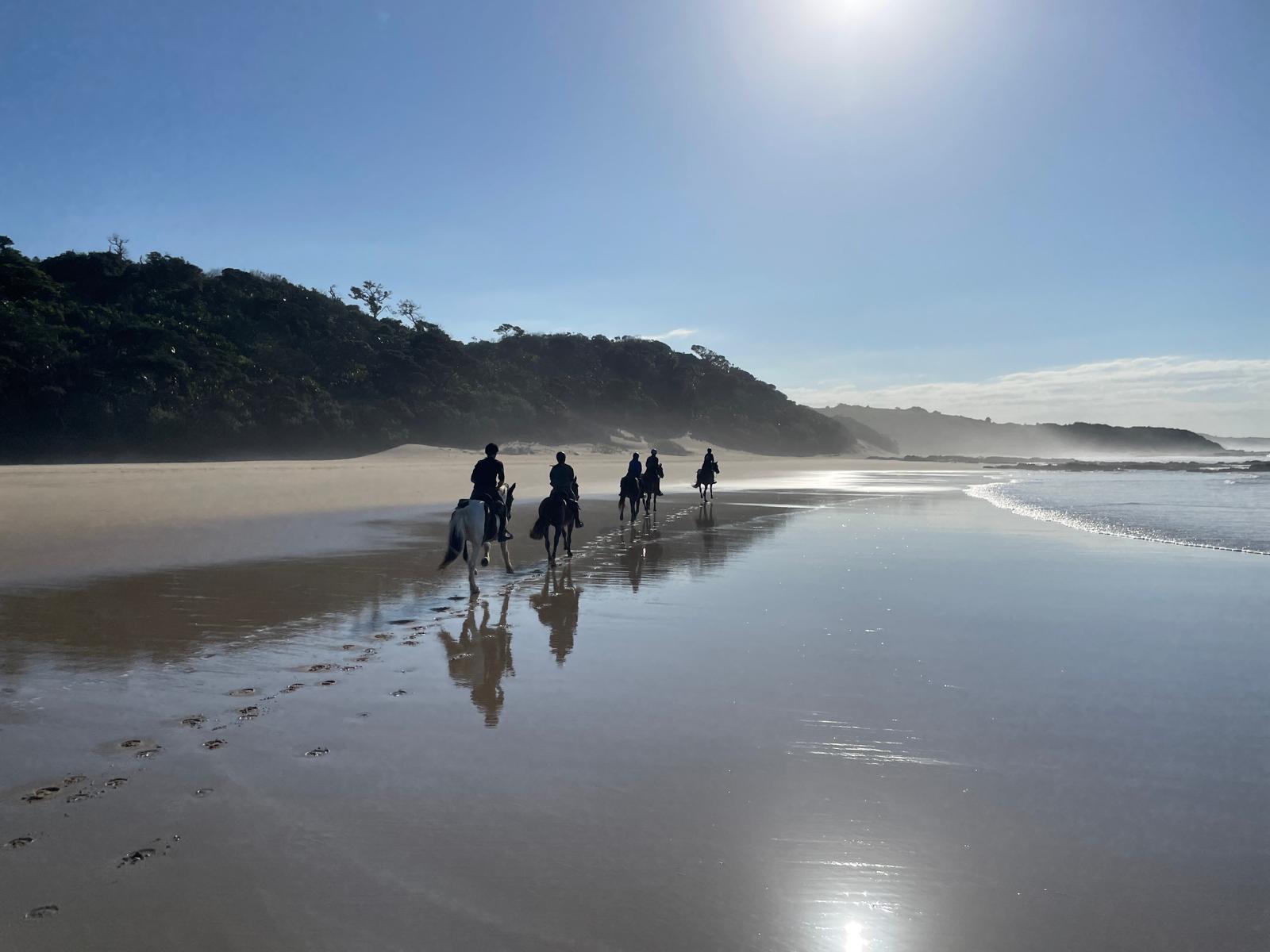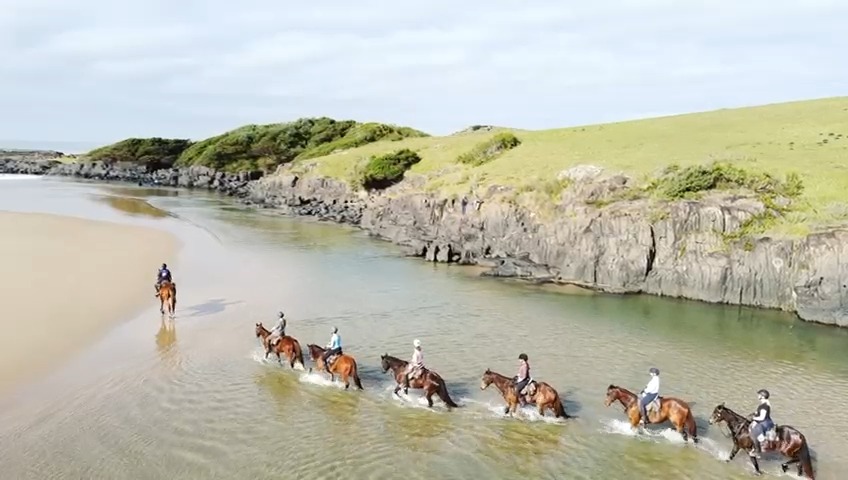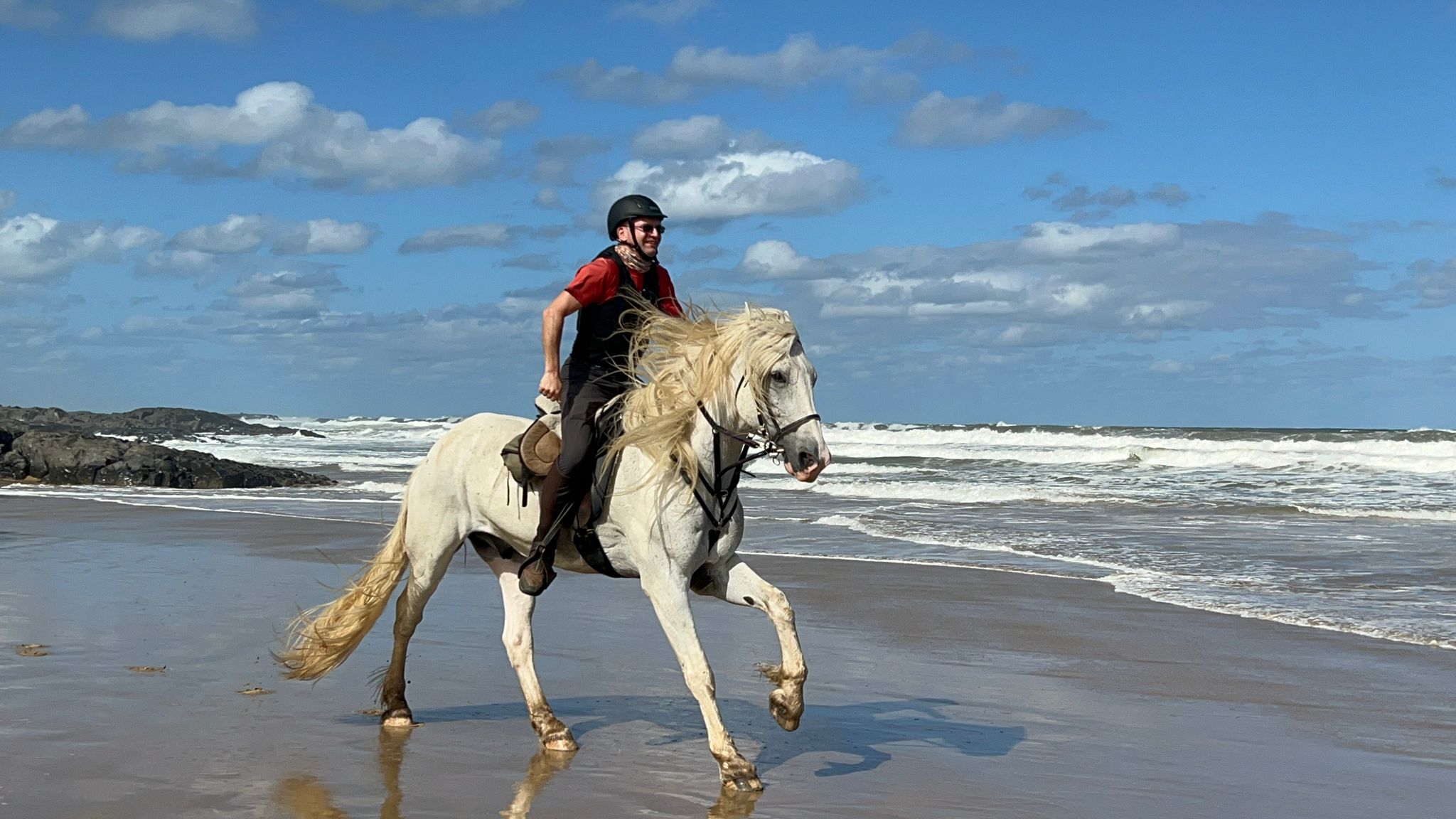
#6 Dress Appropriately
Tight pants and loose reins are the best way to tackle a long-distance horse ride. Baggy pants will bunch up against the saddle, causing lumps of fabric that grind into your sensitive flesh. Underwear should be practical and plain - lace and other decorations only lead to embarrassing chafes and rubs!
Quick-drying riding pants or tights are more comfortable than jeans or heavy jodhpurs and won’t become stiff and abrasive if they get wet, making them more comfortable for longer distances.
Layer your tops so you can adjust for changing weather conditions on the trail. A lightweight long-sleeve shirt protects your arms from brush and sun exposure.
Pairing short riding boots with half chaps will be more comfortable than wearing long riding boots that take forever to dry and may get damaged.
Of course, an internationally approved helmet is also essential, and a pair of gloves is always handy for preventing blisters.
Try to avoid loose-fitting clothes that may upset the horse by flapping or cause potential injury by catching on tack or trail hazards.
#9 Practice Digital Detox
As a horse trails guide, there’s nothing more disheartening than seeing riders glued to their smartphones. I know you want to capture the best moments on camera and share your wonder and delight with your friends on social media, but that’s what the evenings are for!
When you’re in the saddle, stay present, smell the roses, breathe in the ocean air, and let your thoughts align with your horse’s rhythm, creating a deeper connection than you’ll ever get with Wi-Fi!
#10 Space Out
A funny thing happens to horses on trail - they suddenly forget all about personal space. In the field, they’ll politely give each other a wide berth, avoiding the gnashing teeth and flashing heels, but once they’ve got a rider on their backs, they abandon all responsibility.
While riding, be aware of your proximity to other guests, giving them as much space as your horse will allow. Admittedly, some trail horses like to hug the tail of the horse in front, which can make maintaining a proper distance challenging. However, tailgating not only annoys the riders ahead of you, but also puts you at risk of being kicked should that horse suddenly stop or act up. Similarly, if you know your horse kicks, keep your distance and warn people if you notice them coming too close.

